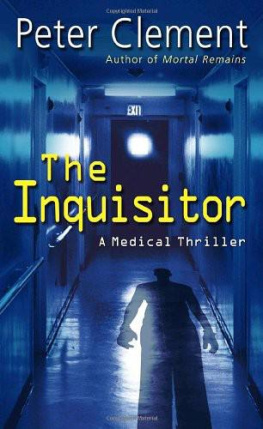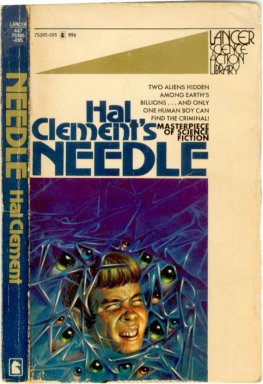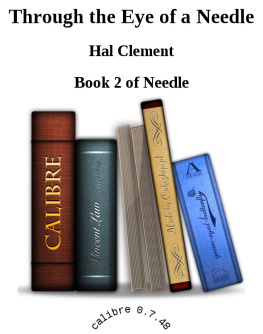LETHAL PRACTICE[042-066-4.9] By: Peter Clement Synopsis: St. Paul's Hospital.Buffalo, New York. Scandal rocks the medical community when someonemurders the chief administrator, plunging a long thin cardiac needleinto his heart with deadly precision. Top ER physician Earl Garnetis one of the few doctors who knows how to insert a cardiac needle. Now asuspect, Garnet races to uncover the truth, even as he becomes embroiledin a conspiracy far bigger and more sinister than he could everimagine--a secret that could blow apart the very medical establishmentGarnet has sworn to serve. Books published by TheBallantine Publishing Group are available atquantity discounts on bulk purchases for premium,educational, fund-raising, and special sales use.
For details,please call 18007333000. This book is dedicatedto my friends and colleagues and to my "New Yorkangels"--Beverly, Carolyn, Danelle, Jeff, and Denise--for theirgenerosity, guidance, and wonderful support. Sale of this bookwithout a cover may be unauthorized. If this book is coverless, it may havebeen reported to the publisher as "unsold or destroyed" andneither the author nor the publisher may have received payment for it. A Fawcett Gold MedalBook Published by The Ballantine Publishing GroupCopyright 1998 by Baskerville Enterprises Ltd. All rights reserved underInternational and Pan-American Copyright Conventions.
Published in the UnitedStates by The Ballantine Publishing Group, a division ofRandom House, Inc., New York, and simultaneously in Canada by Random Houseof Canada Limited, Toronto. http://www.randomhouse.com Library of CongressCatalog Card Number: 9793255 ISBN 0449002810 Manufactured in theUnited States of America First Edition: April1998 10 9876543 Chapter 1. "I'm going to die,aren't I, Doc?" Christ, they always seemed to know. "No, sir," Ilied. "Your lungs arefilling with fluid. We're going to give you medication to clear them out."Openmouthed and gasping beneath the oxygen mask, the patient was frantic forair.
All the muscles in his chest and abdomen heaved with everyattempt to breathe, but each breath was shallow and ended with an ominousgurgle. His skin felt clammy and had turned the color of a dead fish'sbelly. I guessed he was about fifty, though he looked almost twicethat age now. We were in the resuscitation room, a large, tiled chamber,cold, full of echoes, harsh light, and harsher verdicts. Crouched overthe patient's left arm, Susanne Roberts, head nurse, was strugglingto find a vein and get in an IV. "GetVentolin and eighty milligrams of Lasix. "GetVentolin and eighty milligrams of Lasix.
I'll try to get a line in his rightarm." I was already reaching for a tourniquet as Susanne moved fast tofollow my order. The patient's skin was slippery cold. I moved myfingers to his neck and found a pulse. It was very faint and rapid, but atthe wrist, there was nothing. Shock. "And dopamine!" Iyelled after Susanne.
She and I had run this race together a lot of times duringthe fifteen years she'd worked in the ER and, like familiar sex,she'd know exactly what I wanted. The patient's respirations weregetting faster, the gurgling louder. He was literally drowning in his ownfluids. An IV, the drugs, and intubation might empty the lungs in time but,then again, might not. I tourniqueted his right arm but got no bulge atthe vein site. I'd have to make a blind try.
I anointed the chosenspot with alcohol and went in. Still nothing. His chest was heavingharder now. He could no longer utter syllables. I advanced the IV. Bloodstarted to come back up the catheter.
I was in, but he was lookingbluer. The cardiac monitor showed extra beats. Susanne was back at myside with the drugs. "I got a line," I said. "Give me the IV."She passed me the clear tubing that dangled from overhead sacks offluid. I shoved the tip through the blood running from the end of my needlecatheter and opened the line.
The skin bulged with overflow from a brokenvein. Shit. When it goes wrong, it really goes wrong. His eyes beganto roll. "Call ICU stat, please, and inhalation therapy." I spokein that phony, calm tone we use when we're losing it. I've always wondered ifit fools anyone.
Susanne hit the phones, and I abandoned trying for anIV, reaching instead for the intubation tray. The man's lungs werefilling up much faster than I'd expected. Bloody foam started bubblingout of his mouth. Too late for medication. My only hope of saving him nowwas to pass a tube down his airway and blow the fluid back out of hislungs with pressurized oxygen. Susanne finished her terse conversation,then started hooking up the tubes and equipment we'd use.
The overheadPA screeched, "ICU and inhalation therapy, stat} Emergency department!"Now the whole hospital knew we were in trouble. So did the patient. Hedropped his head, seized, and quit breathing. "Callninety-nine!" I yelled. The code would bring the cardiac arrest team. The heart monitorshowed the jagged dance of ventricular fibrillation.
Susannewas shoving a board under the patient's shoulders as I grabbed for thepaddles, then set the machine for two hundred joules. Susanne slappedsome lubricant on the man's chest and turned back to the phones. Thecurrent hit him with a loud thwack, arched him, but left the heartdead. I shocked him again. The jolt hit, but still no response. Nothing. Nothing.
The inhalationist arrived. "Move in!" Icommanded. She was already at the man's head, pulling off the clear mask andtubing we'd applied earlier. She plopped a black ventilating mask on hisface and attached it to a rubber bag that she squeezed to give him afew puffs of oxygen. Next she reached for a laryngoscope, flickedit open like a switchblade, and went into his mouth. Foam and vomitspilled out.
She grabbed a suction catheter and probed through the messin the back of his throat. Noisily it sucked the debris clear. Afterreopening his airway with the blade, she smoothly slid a long, curvedtube into his trachea. "Got it," she reported matter-offactly. Aftershe hooked up the bag and began forcing air into the guy's lungs, morebloody foam came bubbling up at her with each puff. The oxygen waspushing out what had clogged his breathing.
She grinned cockily."Having a good day. Dr. Gamet?" "Smartass," Isaid, smiling. Susanne waspumping his chest. The ventilation and cardiac massage began to pinkhim up a bit, but the monitor looked like the stock market ticker onBlack Tuesday. We still didn't have an IV line.
I heard the crackling ofthe PA. "Ninety-nine, emergency! Ninety-nine, emergency!" theanonymous voice called, requesting help for us again. As much as I may need it,I hate it when help arrives. Everyone in the hospital with nothingbetter to do shows up. They all come thundering in, and my job changesfrom resuscitator to traffic cop. The first through the door wasJames Todd.
As always, his clothes were disheveled and the expression onhis face was intense. A lot of the interns adopted that overworked andearnest appearance because they hoped it would compensate for whatthey didn't know. Just looking at one of them made me feel exhausted. Toddwas buckling up his belt as he came toward me. He'd probably heard thecall in the can. "Dr.
Todd, good to see you. Can you get me a centralline?" Todd had a reputation for magic hands. Under the clavicle is a majorvein that passes to the heart. I knew he'd have a needle in it with notrouble. With a quick nod, he started gloving up while I hoped he'dwashed after finishing at the toilet. As I waited, I broke open a fewampules of diluted epinephrine and poured them into the endotracheal tube.
Theinhalationist resumed bagging. Normally this would have forced theepinephrine all the way down to the small air sacs in the lungs andthrough their walls into the bloodstream. But in this man fluid was pouringback from the bloodstream into these very sacs; the way was blocked. Ihad Todd, Susanne, and the inhalationist stand clear while I shockedhim again. Just as I feared, it didn't work. Two medical students rushedin, and I got them busy drawing a blood gas.
Next page






